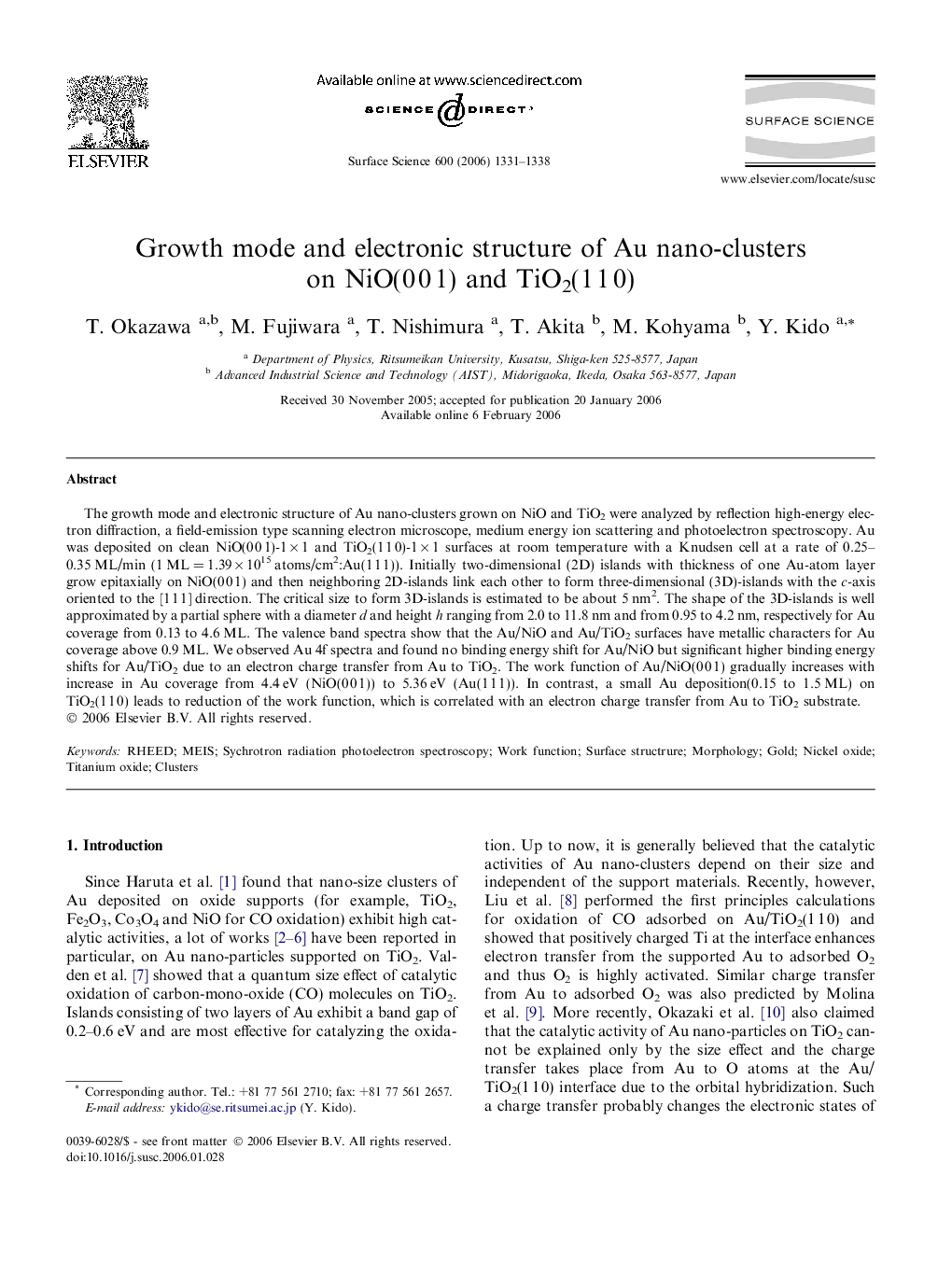| Article ID | Journal | Published Year | Pages | File Type |
|---|---|---|---|---|
| 5426798 | Surface Science | 2006 | 8 Pages |
The growth mode and electronic structure of Au nano-clusters grown on NiO and TiO2 were analyzed by reflection high-energy electron diffraction, a field-emission type scanning electron microscope, medium energy ion scattering and photoelectron spectroscopy. Au was deposited on clean NiO(0Â 0Â 1)-1Â ÃÂ 1 and TiO2(1Â 1Â 0)-1Â ÃÂ 1 surfaces at room temperature with a Knudsen cell at a rate of 0.25-0.35Â ML/min (1Â MLÂ =Â 1.39Â ÃÂ 1015Â atoms/cm2:Au(1Â 1Â 1)). Initially two-dimensional (2D) islands with thickness of one Au-atom layer grow epitaxially on NiO(0Â 0Â 1) and then neighboring 2D-islands link each other to form three-dimensional (3D)-islands with the c-axis oriented to the [1Â 1Â 1] direction. The critical size to form 3D-islands is estimated to be about 5Â nm2. The shape of the 3D-islands is well approximated by a partial sphere with a diameter d and height h ranging from 2.0 to 11.8Â nm and from 0.95 to 4.2Â nm, respectively for Au coverage from 0.13 to 4.6Â ML. The valence band spectra show that the Au/NiO and Au/TiO2 surfaces have metallic characters for Au coverage above 0.9Â ML. We observed Au 4f spectra and found no binding energy shift for Au/NiO but significant higher binding energy shifts for Au/TiO2 due to an electron charge transfer from Au to TiO2. The work function of Au/NiO(0Â 0Â 1) gradually increases with increase in Au coverage from 4.4Â eV (NiO(0Â 0Â 1)) to 5.36Â eV (Au(1Â 1Â 1)). In contrast, a small Au deposition(0.15 to 1.5Â ML) on TiO2(1Â 1Â 0) leads to reduction of the work function, which is correlated with an electron charge transfer from Au to TiO2 substrate.
